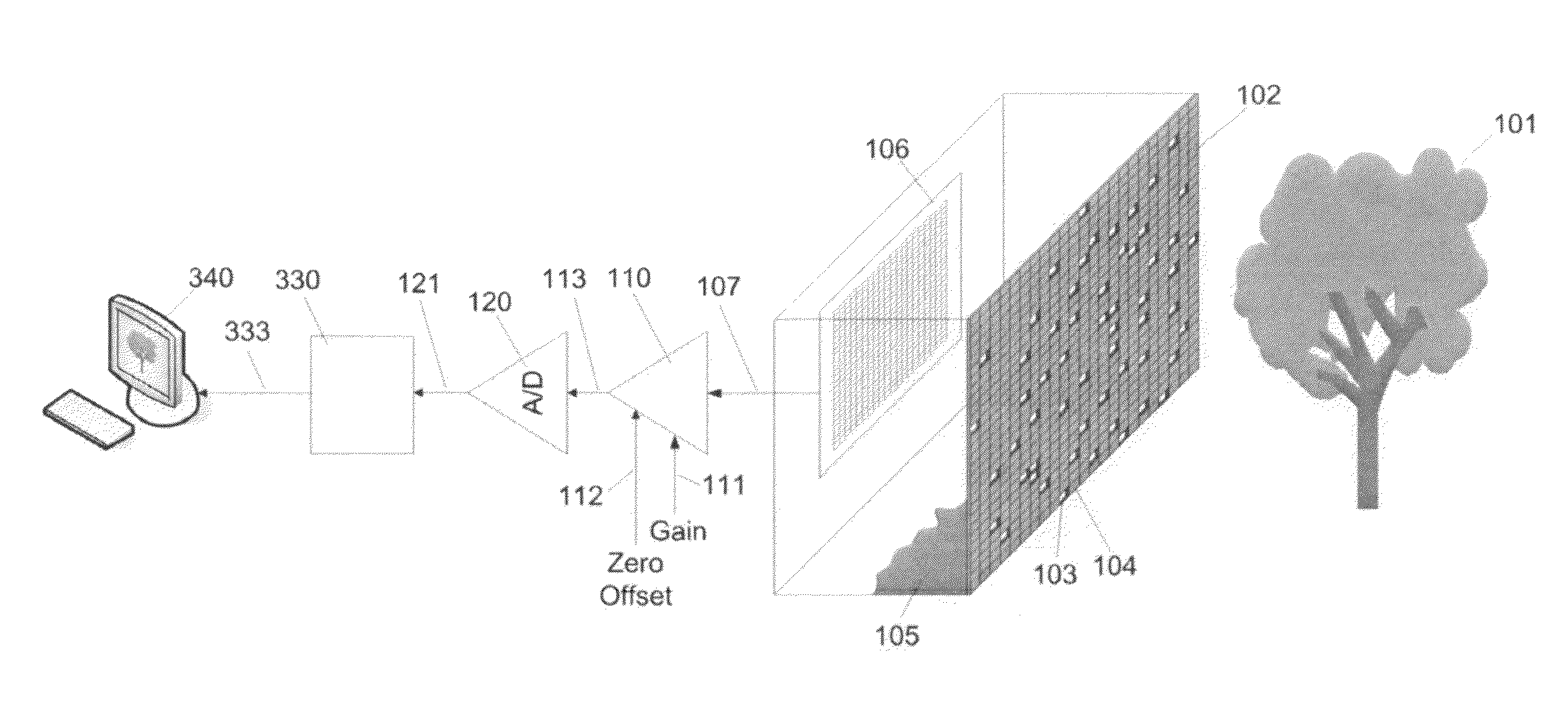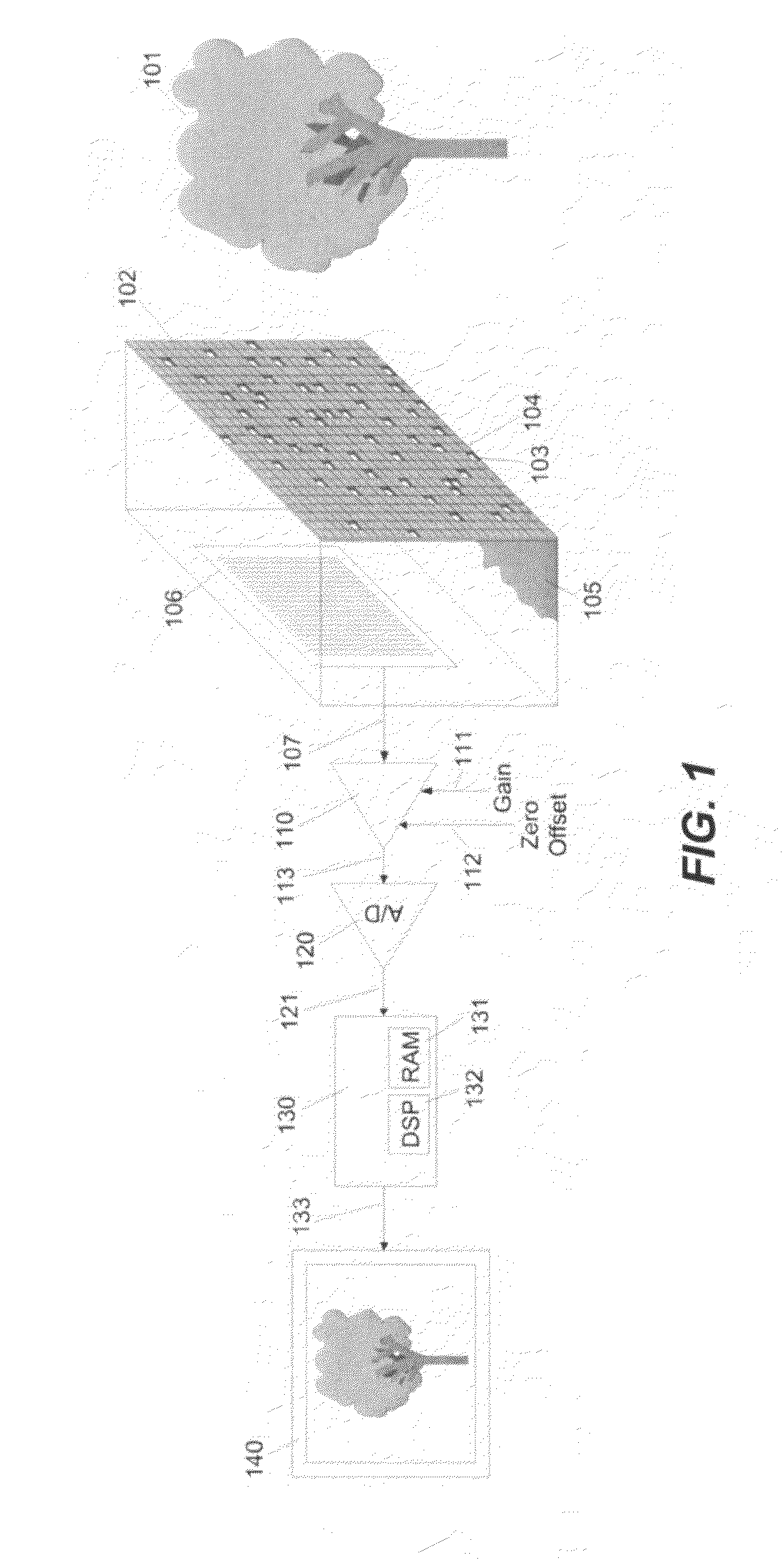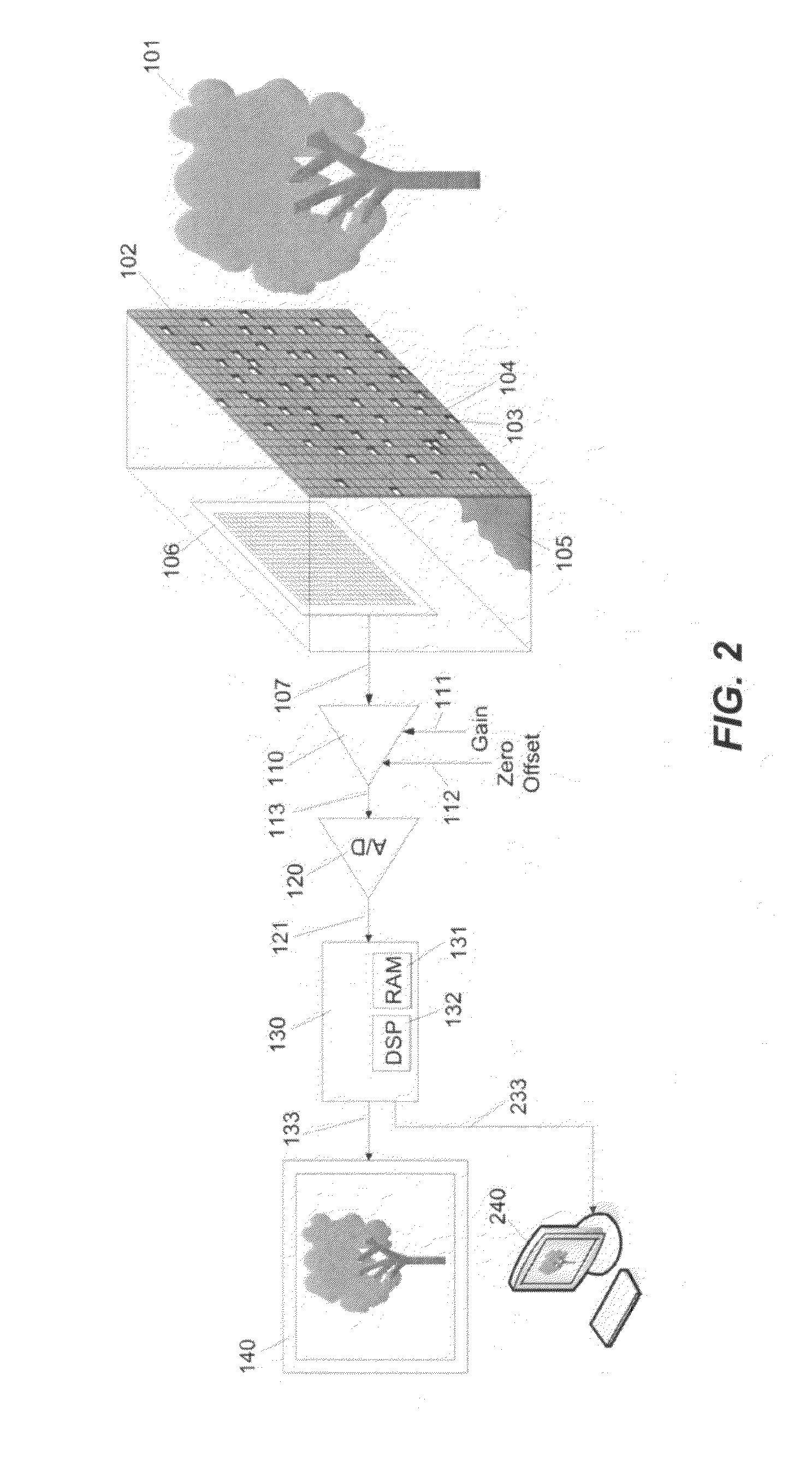Apparatus and method for capturing still images and video using coded aperture techniques
a coded aperture and still image technology, applied in the field of image capture and image processing, can solve the problems of coded aperture imaging to date that is limited, cannot handle these types of unconstrained images, and the pixel close to the field of view may be noisy or even unusabl
- Summary
- Abstract
- Description
- Claims
- Application Information
AI Technical Summary
Benefits of technology
Problems solved by technology
Method used
Image
Examples
Embodiment Construction
[0049]A system and method for capturing still images and video using coded aperture techniques is described below. In the description, for the purposes of explanation, numerous specific details are set forth in order to provide a thorough understanding of the present invention. It will be apparent, however, to one skilled in the art that the present invention may be practiced without some of these specific details. In other instances, well-known structures and devices are shown in block diagram form to avoid obscuring the underlying principles of the invention.
Camera System Architecture
[0050]A visible light coded aperture camera according to one embodiment of the invention is illustrated in FIG. 1. The illustrated embodiment includes a coded aperture 102 placed in front of a light sensitive grayscale or color semiconductor sensor 106. The coded aperture 102 is a pattern of circular, square or rectangular elements, some of which are transparent to visible light (e.g. element 103) and...
PUM
 Login to View More
Login to View More Abstract
Description
Claims
Application Information
 Login to View More
Login to View More - R&D
- Intellectual Property
- Life Sciences
- Materials
- Tech Scout
- Unparalleled Data Quality
- Higher Quality Content
- 60% Fewer Hallucinations
Browse by: Latest US Patents, China's latest patents, Technical Efficacy Thesaurus, Application Domain, Technology Topic, Popular Technical Reports.
© 2025 PatSnap. All rights reserved.Legal|Privacy policy|Modern Slavery Act Transparency Statement|Sitemap|About US| Contact US: help@patsnap.com



